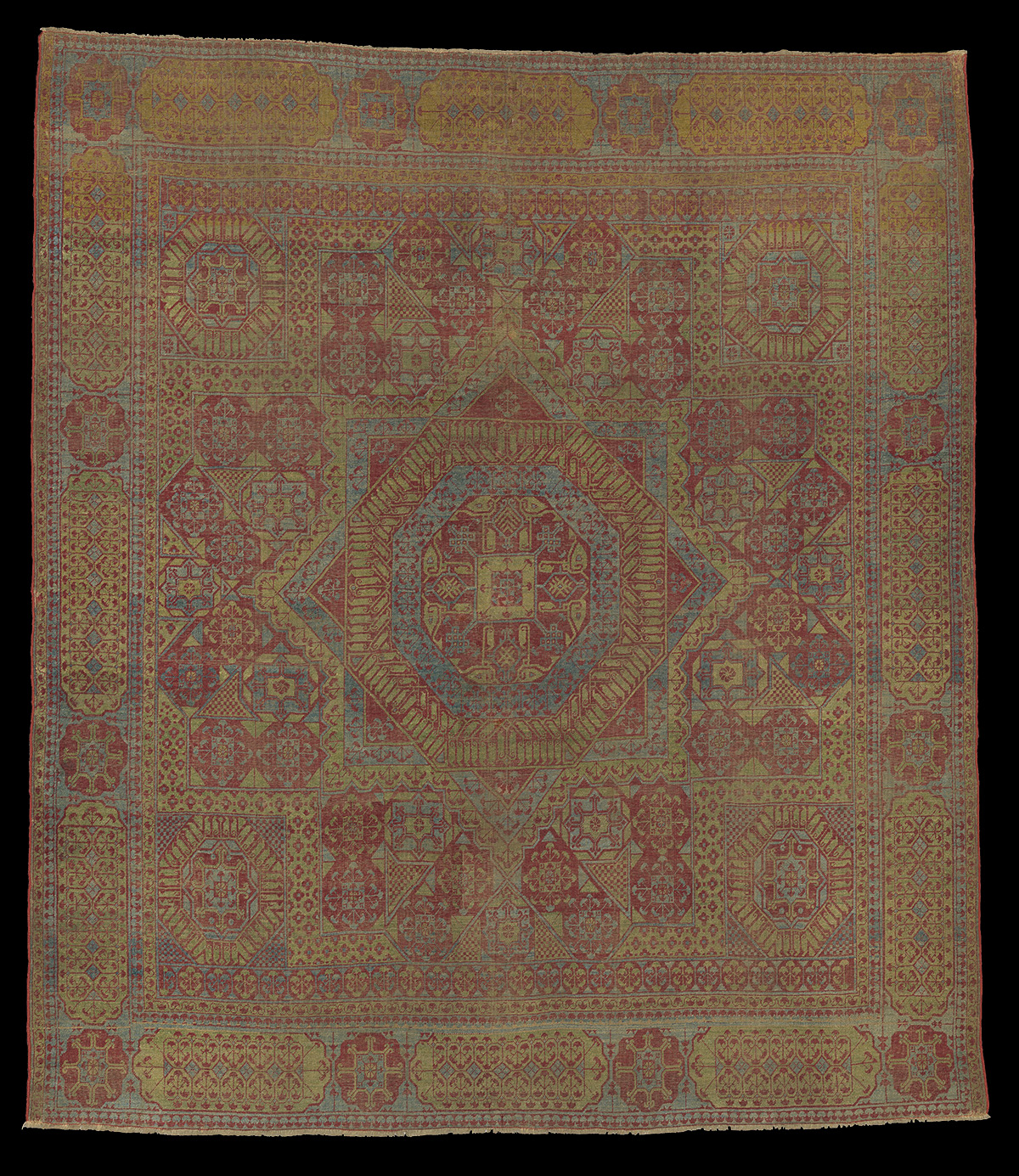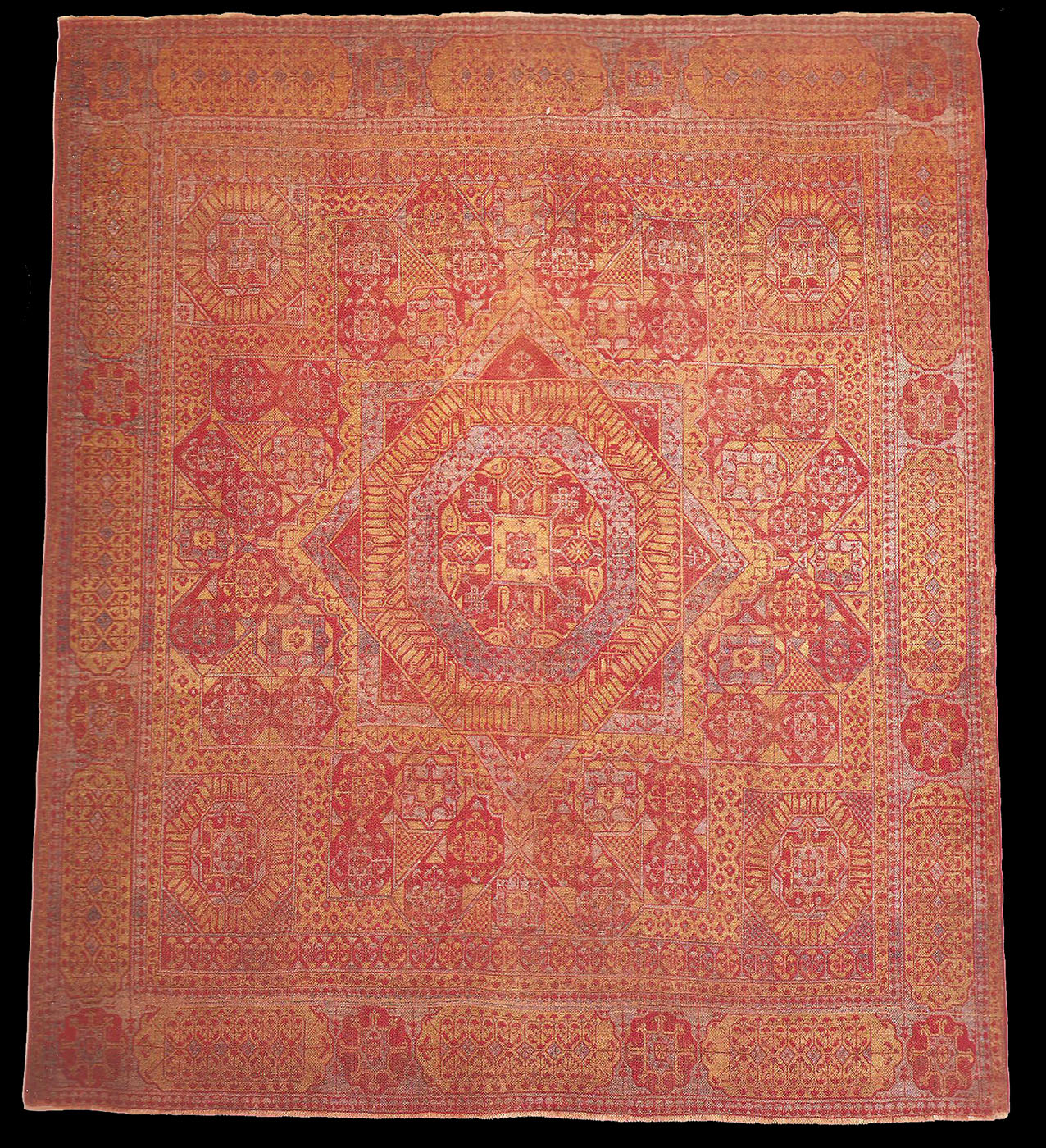|
Blumenthal
Mamluk carpet, The Metropolitan Museum of Art, New York (inv. no:
41.190.262). 218 x 250 cm.
Date: late
15th–early 16th century Geography: Egypt, Cairo
Culture: Islamic
Medium: Wool (warp, weft and pile); asymmetrically knotted pile
Dimensions: L. 98 1/2 in. (250.2 cm) W. 86 in. (218.4 cm)
Classification: Textiles-Rugs
Credit Line: Bequest of George
Blumenthal, 1941 Accession Number: 41.190.262
Description
Documents first refer to Cairo as a carpet‑weaving center in the last
quarter of the fifteenth century. Carpets of this type figured
significantly in Mediterranean commerce and appear in Venetian paintings
as early as the sixteenth century. They are characterized by kaleidoscopic
profusion of tiny motifs and a limited color range, resulting in an
iridescent effect. Production of these so‑called Mamluk carpets continued
until the mid-sixteenth century, after the 1517 Ottoman conquest of Egypt.


|


